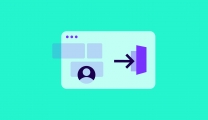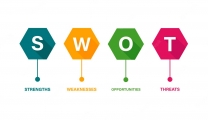What is One-to-One Marketing?
By now, most marketers have a good read on what personalized marketing is all about — content that’s fine-tuned to cater to the interests, values, and preferences of a particular consumer or demographic.
One-to-one marketing is similar in that it’s all about spot-on personalization, but it also takes the concept one step further.
In one-to-one marketing, a brand or company seeks to establish a genuinely intimate, highly individualized relationship with the one consumer on the other end of each interaction.
That means instead of segmenting larger groups of customers into smaller, increasingly specialized subgroups and sending everyone in each group the same message, you deliver content that scans as entirely unique to each customer.
Why Do You Need to Personalize Your Strategy?
Adopting a one-to-one approach to your marketing campaigns keeps your company relevant by aligning you with the times and with current consumer expectations. It also delivers crucial benefits like the following:
You truly get to know your customers
The better a business knows its buyer personas, the more efficiently it delivers products and services that cater to expectations.
One-to-one marketing gives marketing pros an unparalleled opportunity to get to know individual consumers on an ongoing basis.

You boost revenue by increasing customer satisfaction
The happier your customers are, the more loyal they become to your brand.
Loyal customers spend more money with you and shop more often. They also sing your praises to other people they know, meaning you may soon have their family and friends as customers, too.
The hyper-personalization of one-to-one marketing makes it possible to create an individualized buyer’s journey that perfectly fits each unique consumer to a tee.
And the better tailored the customer experience, the smoother that customer’s buyer’s journey will be.
You deal with fewer broken connections
Your existing and potential customers have a lot vying for their attention these days — so much so that they’re not hesitant to break connections that just aren’t serving them anymore.
Unfruitful and impersonal relationships with brands are typically the first to earn a dreaded unfollow or unsubscribe.
One-to-one marketing helps preserve these connections by ensuring you’re serving your customers the content they want to see.
You’re perpetually in the right place at the right time
Not only does a one-to-one marketing strategy help you discover what your customers really want from you, but you’ll gain access to valuable details about how they honestly behave.
When this data is used wisely, you can anticipate your customer’s needs by showing up for them where and when they most want to see you.
How to Create an Effective One-to-One Marketing Campaign
Imagine you’re on your lunch hour and decide to visit your favorite sandwich shop for one of the toasted ham on rye sandwiches you buy every time you’re there.
Now imagine the staff at this particular shop has gotten to know you so well and learned to anticipate your needs so efficiently, they’re able to hand you your finished sandwich before you even open your mouth to order it.
That feeling that comes with having your needs and preferences understood and anticipated by a service provider you like inspires loyalty unlike anything else.
That’s the magic of one-to-one marketing at work. Here’s how to put it to work for you.
1. Put together your databases
Data gathering is an integral part of any modern marketing campaign, but it’s essential in one-to-one marketing.
Information is the key to getting to know your customers so well, you not only know precisely what they need but can accurately anticipate when they need it.
And all that starts with detailed, thorough data.
Build a comprehensive database for your customer information. In the interest of thoroughness, be sure to include information from as many different channels as possible.
2. Create detailed profiles of your customers
Most modern marketing strategies address the importance of separating your various customers into segments based on their shopping behavior and the demographics they belong to.
However, the goal with one-to-one marketing is to go much deeper — all the way to segments consisting of only one person apiece.
Create unique profiles for each customer that answer questions like the following:
When your customer visits your website or online store, what do their browsing patterns look like?
What types of pages do they visit most, and for how long?
Has this customer ever spoken directly with your support team before?
What was the conversation about, and how was the situation resolved to the customer’s liking?
Have they completed a purchase with you yet?
What types of items do they buy, and what can you intuit about them from their typical shopping patterns?
Does this customer have a history of starting purchases without completing them?
How often do they do this compared to the number of times they do finalize a buying decision?
How does this customer feel about your brand, products, and company overall?

Are they satisfied, and if they’re not, what might it take to make them happier?
By studying your data and using it to answer questions like these, you can learn a lot about your customers and intuit even more as to what it might take to get them through your sales funnel a lot more often.
3. Craft an ideal buyer’s journey for your clientele
Although one-to-one marketing is mainly about how to hyper-personalize the customer experience for each unique customer in your database, you’ll also want to analyze your research for similarities your customers share.
Pay special attention to the ways your most consistent repeat customers are similar to one another, and use what you learn to streamline your marketing and outreach efforts.
Fill your blog and social media feeds with content designed to address pain points your most loyal customers seem to have in common.
Leverage tactics like trigger e-mails to reach out to people who abandon a cart or otherwise leave your site without purchasing an item they showed interest in.












Replies to This Discussion